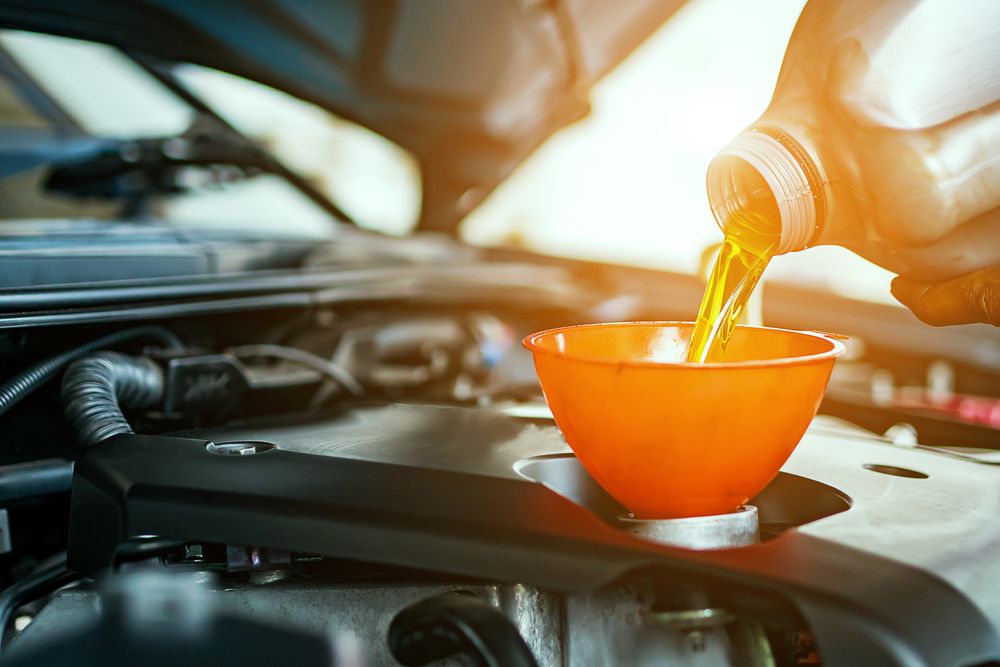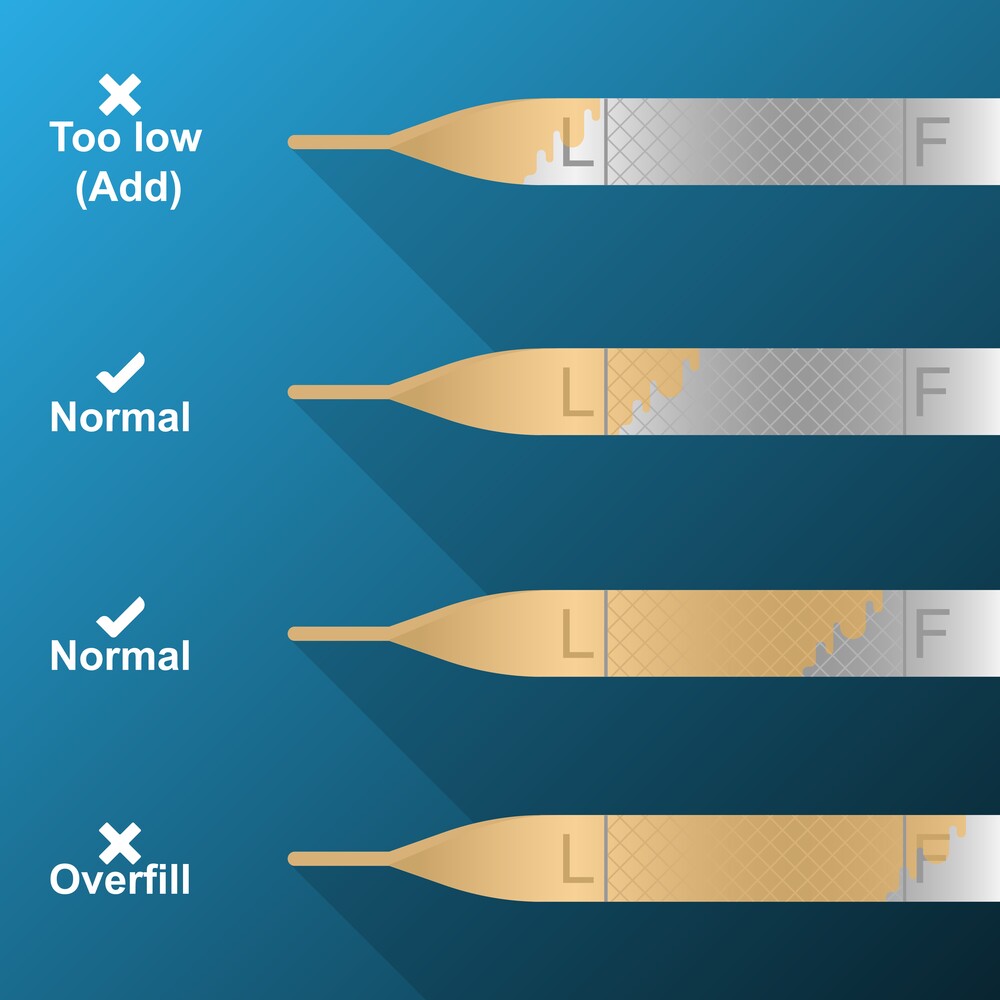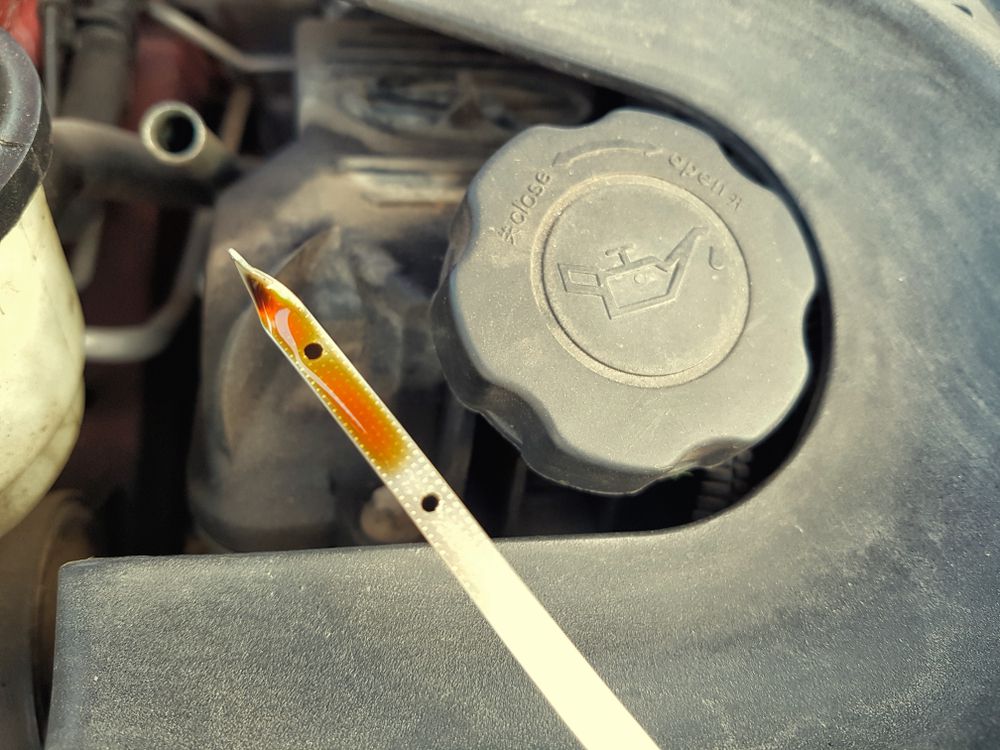Adding oil to a hot engine may seem unintuitive for someone inexperienced with vehicle maintenance.
It is perfectly fine to add oil to a hot engine. However, when checking the engine oil level, you should wait a minute or so after turning off the engine to let the oil that was circulating through the engine drain back into the oil pan where the oil level is measured.
Below we will be discussing the importance of engine oil, how to check the oil level of your vehicle, if you should add oil to a hot engine or not, how long to let the engine cool before adding oil, and more.
Let's dive in!
 Adding engine oil to a hot engine
Adding engine oil to a hot engine
Why Is Engine Oil Important?
Engine oil serves a number of essential purposes, including:
Lubrication: reduce friction and minimize wear
Cleans Internals: suspends contaminants, mostly particles from the combustion processes, preventing them from adhering to components such as the piston rings. The oil is continuously circulated through a filter to remove the majority of the contaminants
Cools Engine Components: engine oil cools the engine's internals like bearings that will quickly fail and cause catastrophic damage if they overheat.
Acts As A Seal: the engine oil acts as a seal, for example, the piston rings to help maintain compression
Dampen Vibration: softens the vibrations caused by the engine's moving parts
Prevents Corrosion: forms a fine coat of oil over the engine's internals protecting the components from moisture
Transfer Energy: engine oil is incompressible, so they act as a medium to transfer energy to operate the valve lifters
Your engine oil needs to be changed regularly because as engine oil ages, it collects contaminants that prevent it from optimally fulfilling its purposes.
Is It Ok To Add Engine Oil To A Hot Engine?
You must maintain the engine oil level to a certain level to prevent engine damage, but as an engine ages, it may start to burn or leak oil, lowering the engine oil level.
If your engine oil lowers to the fill mark on the dipstick, adding oil (usually 1 US liquid quart) is important to bring the oil level back to the full mark.
Adding oil to a hot engine is OK, but you should exercise caution because touching your vehicle's hot components can cause severe burns.
However, while it is safe for the vehicle to add oil to a hot engine, you will probably be unable to get an accurate read when using a dipstick on how much oil needs to be added, and you should wait at least a minute or two to let the oil drain back into the oil pan.
Can You Open an Oil Cap When a Car Is Hot?
Absolutely!
It's perfectly fine to open the oil cap when the car's engine is still hot; however, be sure to turn the engine off before removing the cap, or the engine will kick up oil outside through the oil cap and make a mess.
Can I Add Cold Oil To A Hot Engine?
Adding cold oil to a hot engine is perfectly fine.
 Engine Dipstick Guide
Engine Dipstick Guide
Where To Check The Oil Level Of Your Vehicle?
Some newer vehicles will have digital oil monitors, so you should check with the owner's manual to see what type of monitor your vehicle has.
With these modern monitors, you'll be able to tell the oil level from inside your car, somewhere on the dashboard.
However, if your vehicle lacks this modern technology, then you'll have to resort to checking the old-fashioned dipstick way.
To do this, you will want to ensure that your car is sitting on level ground, and while it's safe to add oil to your engine while it's hot, you may want to let it cool down so that you do not accidentally touch any hot components.
Now, to check the oil level, follow these steps:
Release the car's hood, open it up, take out the dipstick and wipe any oil off of it
Next, you'll want to shove the dipstick back into the tube, pushing it all the way down
Pull it back out and observe the oil on the dipstick
The dipstick should have some sort of marker to indicate the proper oil level of your vehicle, and if the oil is below this marker, then it is time to add some oil to your engine.
 Engine oil dipstick full and empty marks
Engine oil dipstick full and empty marks
How Much Oil To Add When Low?
This will depend on how much oil is still in your engine.
However, to start, it is recommended that you add half a quart at a time, checking the dipstick each time you add new oil.
Once the oil reaches the correct marker, you have successfully added enough oil to your engine, and you do not need to add more.
Can You Change Oil With A Hot Engine?
When an engine is hot, it allows the oil to drain faster than when it's cold.
By waiting about 10 minutes, the engine will still be warm enough to allow the oil to drain quickly, but the components of your vehicle, such as the exhaust manifold, won't be scorching hot, decreasing the risk of you getting burned.
Can You Add Oil To A Cold Engine?
It's perfectly safe to add oil to an engine that is cold and will not cause your vehicle or you any harm.
Adding oil to a cold engine will prevent you from getting burned by any internal parts that are still hot inside your car.
Starting Car After Adding Oil?
After adding oil, you need to double-check the car's engine oil level before starting your car.
Even professionals who perform dozens of oil changes daily double-check the engine's oil level after every oil change before starting the car. Better safe than sorry!
Conclusion
So, should you add oil to a hot engine?
Whether or not you should is up to you, but it should be fine to do so if you're in a rush.
It may be better to wait for it to cool down a little before adding oil, but if you're in a hurry and need to add it right away, just remember to be careful when touching hot parts so that you don't end up hurting yourself.
FAQs
What Happens When Engine Oil Gets Too Hot?
When engine oil becomes too hot, usually from an overheated engine, it can create deposits and sludge which collect around the intake valves and can prohibit airflow to the engine.
This can cause:
A rough idle
Engine misfire
Power reduction
Fuel economy decrease
In addition, overheating oil can cause additives of the oil to lose their effectiveness quicker which will, ultimately, prevent the oil from providing lubrication to the necessary parts.
Plus, if sludge develops, this can result in clogged oil passages which can cause damage to important parts of your vehicle.
Can You Top-Up Engine Oil Without Draining?
Yes, in most cases, adding new oil to your engine is OK without draining out the old.
Still, it's recommended that a complete oil change be conducted at least once a year or if the vehicle has driven 5,000 miles before the last oil change.